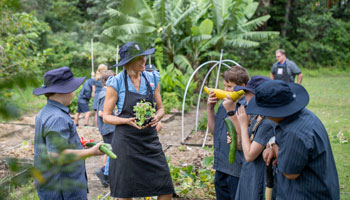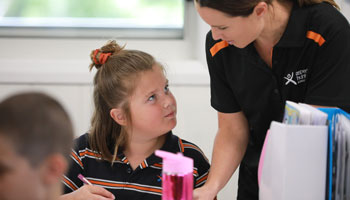Protective factors can support student resilience and maintain whole-school wellbeing.
Throughout childhood and adolescence, students experience a range of events and influences that may impact upon wellbeing. These factors are referred to as risk and protective factors. Whole-school wellbeing approaches can provide a strong protective factor for student wellbeing, particularly during challenging times.

Protective factors are resources that support student resilience and maintain wellbeing. They relate to the student themselves, family circumstances, peer relationships, school setting and the broader community (Be You, 2020). By supporting and enhancing protective factors, young people may be less vulnerable to mental health issues. Protective factors can buffer or moderate the influence of risk factors.

FIve protective factors to support whole-school wellbeing
Connection
A sense of belonging and connectedness are well known wellbeing protective factors in both families and in the school setting. A strong relationship with families or teachers can support student wellbeing and learning. Morning meetings, circle time, greetings and sharing together provide opportunities to check-in with students and focus on connection and relationships. Supporting students’ cultural identities and/or embedding a faith lens in whole-school wellbeing approaches can increase levels of student resilience.
Supportive Environment
The impact of the family environment on the wellbeing of students should be a consideration for schools. Family stability, consistent parenting and strong family values contribute to a sense of student safety. By helping to improve family protective factors, young people are more likely to receive the support they need for learning and wellbeing. Where families are unable to provide adequate support, it is even more important for schools to draw upon existing school policies and procedures to assist families in need and to support students.

Student Factors
Students themselves bring a range of factors that support their wellbeing and resilience. An ability to identify, express and manage emotions and behaviour is important for all students. Students who have realistic and positive expectations about themselves as well as a sense of optimism about the future are better placed to adapt to any challenges they face.

Social and Emotional Learning
Social and emotional learning (SEL) skills related to relationship-building and communication allow students to maintain friendships. SEL helps students understand and manage emotions, set goals, show empathy, establish positive relationships, problem solve and make responsible decisions.

Whole-school Wellbeing Approaches
Lastly, schools can engage in a range of whole-school wellbeing approaches that enhance protective factors and ultimately student wellbeing:
- focusing on building partnerships with families to support wellbeing and learning
- demonstrating empathy for students and families
- responding consistently and with care to student and family concerns
- prioritising teacher/student relationships to maintain connections with classes, tutor, and year groups
- assisting families to access additional support when required
- taking appropriate measures to prevent or respond to student safety matters
- creating a supportive learning environment that enhances social and emotional skill development
- noticing all student behaviours and ensuring transparent in school wellbeing processes.
AISNSW Wellbeing Support
References
Beyond Blue Be You National student mental health and wellbeing initiative (2020)
Collaborative for Academic and Social and Emotional Learning - CASEL (2020)
Walker, T. (2020) Social-emotional learning should be a priority during COVID-19. National Education Association, USA.
Image Credits with thanks: Hunter Valley Grammar School, Bishop Druitt College, Autism Spectrum Schools, Kamilaroi Rudolf Steiner School, Emmanuel Anglican College, Ballina.
New to AISNSW and want to receive AISNSW Education News updates? Click here to register, and select ‘AISNSW Education News’ on the Areas of Interest/Subscriptions page.